Introduction
As we grow older, all the organs of the body begin to age and start showing signs of aging. This includes our skin too, which is the largest organ of our body. Though all parts of our body age, it is the aging of the skin that gains maximum attention because it is clearly visible. We always seek out different ways to delay this visible skin again[1].
Aging skin, especially on the face, affects self-image and has many social and emotional implications[2]. The signs of aging skin are clearly visible, like wrinkling, sagging, and a blotchy, uneven skin tone[3].
Causes of Sagging Skin
There are many reasons why skin becomes saggy as we age. These reasons may be internal (Intrinsic aging) or external (Extrinsic aging)[2].
Intrinsic Aging
Intrinsic aging develops over the years as time passes. The speed at which intrinsic aging occurs can vary from one individual to another. Let’s see what exactly happens in intrinsic aging[2].
- Reduction in Elastin: Elastin is a protein that provides tightness and elasticity to the skin. As one ages the amount of elastin in the skin reduces resulting in the skin losing its suppleness and resilience, causing skin to hang loose.
- Reduction in Collagen: Collagen’s main function is to keep the skin taut and firm. As one’s age increases, the amount of collagen in the skin decreases[4].
- Loss of fat: Loss of fat under the skin contributes to the sagging of the skin, especially the face[3].
- Structural changes: With age, the fat pads under the skin shrink, and there is a reorganisation of the soft tissues along with bony alterations, especially on the face[3].
Extrinsic Aging
Extrinsic aging happens due to the external factors as follows[3]:
- Exposure to the sun and aging cause skin damage, resulting in the production of an abnormal type of elastin, which doesn’t provide the same kind of elasticity as seen in young people[5].
- Skin damage from sun exposure causes a significant decrease in the amount of collagen[6].
- Smoking, pollution, poor diet, alcohol consumption, and exposure to UV radiation from the sun significantly contribute to aging[1].
Home Remedies for Skin Tightening
Several natural home remedies that can help firm up loose skin are as follows:
1. Argan oil
Traditionally, Argan oil has been used in hair and skin care products. It helps improve skin hydration and elasticity, thus giving the skin a young and supple look[7].
2. Almond oil
Almond oil softens the skin and helps improve skin tone and complexion. It also helps prevent skin damage caused by UV radiation, which is one of the most important causes of extrinsic aging.
3. Avocado oil
Avocado oil is known to increase the production of collagen, the main component that helps maintain the tightness of skin, thus preventing sagging and loose skin[9].
How to Use Oils for Skin Firming?
- To use any of the above oils to tighten your skin, first, ensure that the skin is clean and dried properly.
- Take the required quantity of oil in your hand and massage it thoroughly on the skin. You may leave the oil overnight and then wash it with lukewarm water on waking up.
Other Natural Remedies for Loose Skin
In addition to oils, there are certain natural ingredients that may offer mild skin-firming effects, though results can vary and are usually temporary.
1. Banana
Bananas are rich in potassium, vitamins, and natural oils. They may help reduce the appearance of wrinkles, preventing a saggy look.
How to use it?
- Mash a quarter of a ripe banana into a smooth paste
- Apply this paste on a clean face. Leave it on for 15-20 minutes
- Rinse with warm water first, followed by cold water. Pat dry.
2. Cucumber
Cucumber helps retain elastin and hyaluronic acid, which are necessary to maintain firm skin[8].
How to use it?
- Peel a cucumber and juice it in a blender
- Take a clean cotton ball and apply this juice onto the affected skin
- Wash off after 15-20 minutes
3. Pineapple
Pineapple contains a range of ingredients, including an enzyme that not only helps improve skin elasticity but also removes dead and damaged skin cells. It also enhances skin hydration, contributing towards giving a clear look to the skin[10].
How to use it?
- Peel a pineapple properly and juice it in a blender
- Take a clean cotton ball and apply this juice to the saggy skin
- Wash off after 15-20 minutes
4. Aloe Vera
The gel found in an aloe vera leaf tightens the skin by improving its elasticity. It also stimulates collagen and hyaluronic acid production, thus preventing wrinkles[11].
How to use it?
- Take an aloe vera leaf and cut off the flat end of the leaf first
- Then slit it open vertically to reveal the aloe gel inside
- Scoop out this gel and apply it directly to the skin. Wash off after 15-20 minutes
5. Coffee Grounds Scrub
Coffee contains caffeine, which helps protect the skin from aging due to oxidative stress[12].
How to use it?
- Mix some coffee grounds with water to make a paste
- Rub this paste all over the saggy skin gently in a circular motion
- Wash off with lukewarm water
6. Honey
Honey helps in the detoxification of the skin. It also helps improve skin elasticity and smooths out wrinkles[13].
How to use it?
- Take the required quantity of honey in a glass bowl
- Add a little water to it so that its consistency is comfortable enough for you to apply to the skin
- Apply this to the wrinkled area and keep it on for 15-20 minutes
- Wash off with lukewarm water
Also Read: Best Home Remedies For Smelly Armpits
Other Tips to Prevent Loose Skin
- To maintain the skin’s youthful appearance, apart from using the above home remedies, it is also essential to have a balanced diet, which can provide all nutrients including antioxidants, to maintain good skin health.
- Drinking enough water (more than 2 liters) is necessary to maintain the moisture levels of the skin.
- It is better to avoid smoking and heavy alcohol intake as they have a significant contribution to the ageing of the skin[1].
- The use of an appropriate moisturizer helps lock in moisture, providing hydration and helping keep the skin smooth[14].
- Application of sunscreen with a SPF of at least 15, is an essential step in skincare so as to prevent sun damage to the skin[15].
Also Read: White Patches On Skin: Causes, Symptoms And Home Remedies
Conclusion
With these tips and simple home remedies, there’s no need to rely on artificial or expensive cosmetics to manage saggy skin. Just take a look in your kitchen, and you’ll find fresh, natural ways to keep your skin smooth and supple!
Also Read: Beauty Benefits of Using Ice Cubes On The Skin
Frequently Asked Questions (FAQs)
Can I go for surgical procedures for skin tightening? While surgery for sagging skin (‘surgical lift ‘) can give the most radical results, one might not be the ideal candidate for it. For example, skin tightening procedures are not recommended for expecting mothers, people on certain medications and if someone has skin infection. Consult a skin specialist to know if you can go for surgery for sagging skin.
Do these home remedies give a permanent skin-tightening effect? There are no scientific studies available which show that the effect of skin tightening by home remedies is permanent. However, since there are no side effects, if you see results, you can continue them regularly.
Apart from home remedies, are there any other ways to improve tightness without going for surgery? Yes, you may opt for commercially available skin-tightening lotions and creams or for non-invasive skin-firming procedures like laser treatment, ultrasound or radiofrequency after consulting a skin specialist.
Can I be allergic to any of the home remedies mentioned here? Yes, to be cautious about not breaking out into an allergy due to any of the remedies mentioned here, you may ask your doctor to conduct a skin patch test for you. The skin patch test is a simple, non-invasive test that can detect allergic reactions to any substance1[16].
References
- Cao C, Xiao Z, Wu Y, Ge C. Diet and Skin Aging-From the Perspective of Food Nutrition. Nutrients. 2020;12(3):870. Available from: https://www.ncbi.nlm.nih.gov/pmc/articles/PMC7146365/
- Swift A, Liew S, Weinkle S, Garcia J, Silberberg M. The Facial Aging Process From the ”Inside Out”. Aesthetic Surgery Journal. 2020;41(10):1107-1119. Available from:https://www.ncbi.nlm.nih.gov/pmc/articles/PMC8438644/
- A. Vashi N, De Castro Maymone M, V. Kundu R. Aging Differences in Ethnic Skin. J Clin Aesthet Dermatol [Internet]. 2016 [cited 5 May 2022];9(1):31-38. Available from: https://www.ncbi.nlm.nih.gov/pmc/articles/PMC4756870/
- Baumann L, Bernstein E, Weiss A, Bates D, Humphrey S, Silberberg M et al. Clinical Relevance of Elastin in the Structure and Function of Skin. Aesthetic Surgery Journal Open Forum. 2021;3(3). Available from: https://www.ncbi.nlm.nih.gov/pmc/articles/PMC8239663/
- Varani J, Dame M, Rittie L, Fligiel S, Kang S, Fisher G et al. Decreased Collagen Production in Chronologically Aged Skin. The American Journal of Pathology. 2006;168(6):1861-1868. Available from: https://www.ncbi.nlm.nih.gov/pmc/articles/PMC1606623/
- Lin T, Zhong L, Santiago J. Anti-Inflammatory and Skin Barrier Repair Effects of Topical Application of Some Plant Oils. International Journal of Molecular Sciences. 2017;19(1):70. Available from: https://www.ncbi.nlm.nih.gov/pmc/articles/PMC5796020/
- Boucetta K, Charrouf Z, Aguenaou H, Derouiche A, Bensouda Y. The effect of dietary and/or cosmetic argan oil on postmenopausal skin elasticity. Clin Interv Aging. 2015 Jan 6;10:339–49. doi: 10.2147/CIA.S71600. PMID: 25673976; PMCID: PMC4321565. Available from: https://pmc.ncbi.nlm.nih.gov/articles/PMC4321565/
- Uthpala TG, Marapana RA, Lakmini K, Wettimuny DC. Nutritional bioactive compounds and health benefits of fresh and processed cucumber (Cucumis sativus L.). Sumerianz Journal of Biotechnology. 2020;3(9):75-82. Available from: https://www.researchgate.net/profile/T-G-G-Uthpala-2/publication/344270982_Nutritional_Bioactive_Compounds_and_Health_Benefits_of_Fresh_and_Processed_Cucumber_Cucumis_Sativus
- Werman MJ, Mokady S, Nimni ME, Neeman I. The effect of various avocado oils on skin collagen metabolism. Connect Tissue Res. 1991;26(1-2):1–10. doi: 10.3109/03008209109152159. PMID: 1676360. Available from: https://pubmed.ncbi.nlm.nih.gov/1676360/
- Packianathan N, Kandasamy R. Skin Care with Herbal Exfoliants.Available from: https://www.researchgate.net/profile/Ruckmani-Kandasamy/publication/224892687_Skin_Care_with_Herbal_Exfoliants/links/54eb59190cf2a0305193c805/Skin-Care-with-Herbal-Exfoliants.pdf
- Sánchez M, González-Burgos E, Iglesias I, Gómez-Serranillos M. Pharmacological Update Properties of Aloe Vera and its Major Active Constituents. Molecules. 2020;25(6):1324. Available from: https://www.ncbi.nlm.nih.gov/pmc/articles/PMC7144722/
- Li Y, Ouyang S, Tu L, Wang X, Yuan W, Wang G et al. Caffeine Protects Skin from Oxidative Stress-Induced Senescence through the Activation of Autophagy. Theranostics. 2018;8(20):5713-5730. Available from: https://www.ncbi.nlm.nih.gov/pmc/articles/PMC6276298/
- Suwiński G, Nowak I. Innovative honey-based product and its beneficial effects measured by modern biophysical and imaging skin techniques. Pharmaceuticals (Basel). 2024 Dec 18;17(12):1709. doi: 10.3390/ph17121709. PMID: 39770550; PMCID: PMC11677624. Available from: https://pmc.ncbi.nlm.nih.gov/articles/PMC11677624/
- Harwood A, Nassereddin A, Krishnamurthy K. Moisturizers. [Updated 2024 Feb 12]. In: StatPearls [Internet]. Treasure Island (FL): StatPearls Publishing; 2025 Jan-. Available from: https://www.ncbi.nlm.nih.gov/books/NBK545171/
- Chavda VP, Acharya D, Hala V, Daware S, Vora LK. Sunscreens: A comprehensive review with the application of nanotechnology. Int J Pharmaceutics X. 2023;5:100220. doi: 10.1016/j.ijpx.2023.100220. Available from: https://www.sciencedirect.com/science/article/pii/S1773224723005725
- Lazzarini R, Duarte I, Ferreira AL. Patch tests. An Bras Dermatol. 2013 Nov–Dec;88(6):879–88. doi: 10.1590/abd1806-4841.20132323. PMID: 24474094; PMCID: PMC3900336. Available from: https://pmc.ncbi.nlm.nih.gov/articles/PMC3900336/
Disclaimer: The information provided here is for educational/awareness purposes only and is not intended to be a substitute for medical treatment by a healthcare professional and should not be relied upon to diagnose or treat any medical condition. The reader should consult a registered medical practitioner to determine the appropriateness of the information and before consuming any medication. PharmEasy does not provide any guarantee or warranty (express or implied) regarding the accuracy, adequacy, completeness, legality, reliability or usefulness of the information; and disclaims any liability arising thereof.
 184
184
 21
21 






















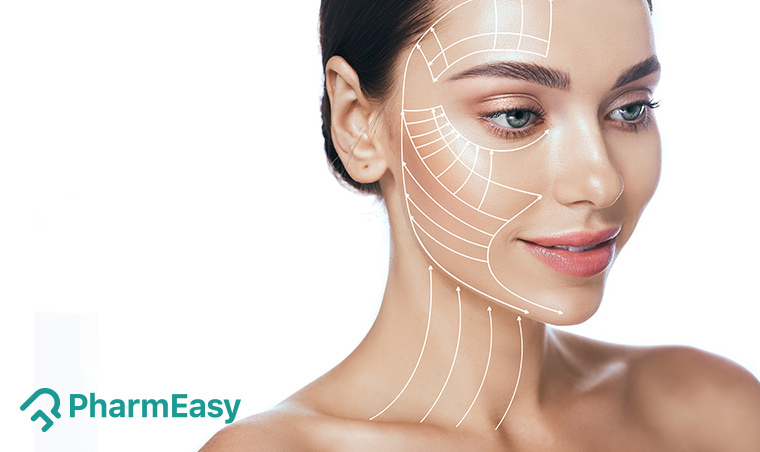
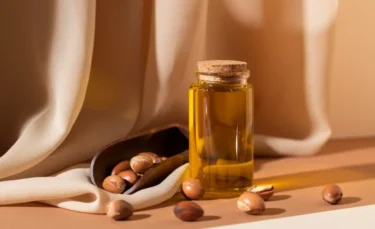
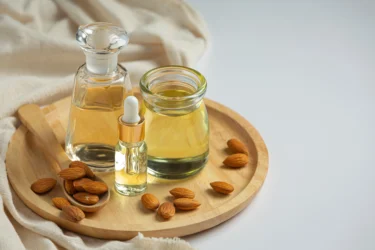
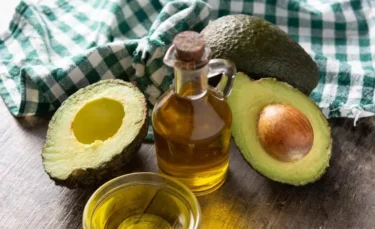



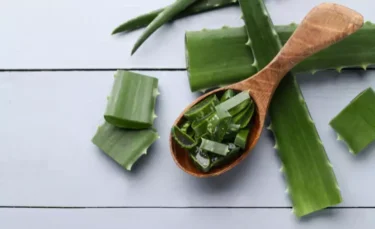
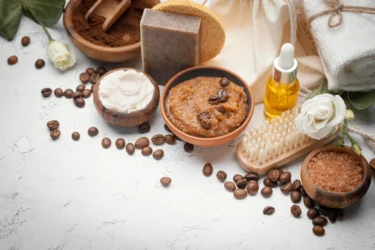


Comments